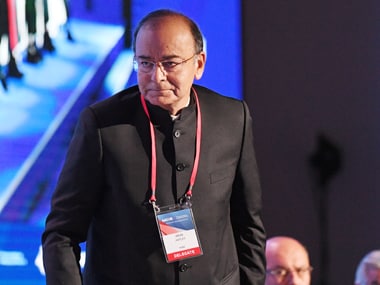Finance Minister Arun Jaitley is all set to present the NDA government’s election-eve Budget . As the government sends clear signals that it would go for simultaneous elections, the nation enters the poll arena in this fiscal itself and most probably this would be the Jaitley’s last budget before the Narendra Modi-government seeks fresh mandate from people. Quite expectedly, any government would love to present feel-good budget at this crucial political juncture. However, fiscal constraints limit Jaitley’s manoeuvrability in delivering the budget dressed up for the elections. 1) Despite growing optimism on the overall growth front, the Economic Survey for 2017-18 presented on the eve of the budget, cautions that the Gross Value Added (GVA) at constant basic prices is expected to grow at the rate of 6.1 percent in 2017-18 as compared to 6.6 percent in 2016-17. The GVA is a much better indicator of the level of economic activity in the country than the GDP reflected in the growth rate numbers. 2) Though the rate of growth in this fiscal is pegged at 6.75 percent rate, the agricultural sector is expected to growth at only 2.1 percent. Half of India’s population still depend on this sector for their livelihood. The growing peasant unrest is already posing a challenge to Modi dispensation. The rural distress has adversely impacted the BJP’s performance in the recent Gujarat elections too. Even by the official estimates, half of India’s population would experience only 2 percent growth rate despite euphoria over growth revival. The agricultural sector registered sluggish rate of growth despite two years of normal monsoon. The weather experts cannot guarantee such favourable season for Modi government in third year in succession. Thus, rural revival presents Jaitley a major challenge. 3) Despite exports rebounding in this fiscal reversing the prevailing trend in the recent past, due to higher expected increase in imports, net exports of goods and services are slated to decline in 2017-18. Added to this, the growing protectionism in the developed world over which even the Prime Minister expressed concern in his address to the World Economic Forum, presents a potential challenge in the external sector. The NDA government may no longer enjoy benign global crude oil price regime. This would further increase the import burden as oil imports form the large chunk of our import bill. [caption id=“attachment_4314193” align=“alignleft” width=“380”]  Union Finance Minister Arun Jaitley. AFP.[/caption] 4) Despite the robust economic growth, the savings and investment as a ratio of GDP generally declined. The share of household sector declined, while that of private corporate sector increased. The declining domestic savings and investment rates do not augur well for Indian economy which is not driven primarily by foreign investment. The declining GVA and falling house hold savings clearly indicate the adverse impact of demonetisation and GST on average Indian. 5) Emerging macroeconomic concerns include high international oil prices persisting, elevated stock prices correcting sharply, provoking a “sudden stall” in capital flows, finding good jobs for the young and burgeoning workforce, especially for women. 6) Direct taxes account for only 35 percent of India’s overall tax collection while it is as high as 70 percent in Europe. Such a regressive taxation has negative impact on common man. The GST will further reinforce this trend. This means tax burden on the rich is declining while common man is asked to bear the high fiscal burden. This trend will further accentuate the grotesque levels of income inequalities in India well documented by the recent Oxfam study. The finance minister will find it difficult to balance between the need to be populist at least on election eve and to be business and industry friendly. 7) Even the Chief Economic Advisor, Arvind Subramanian also cautioned that any correction in ballooning stock prices resulting in capital outflows could compel policy makers to raise interest rates. This could dampen the nascent recovery. 8) The experience in this fiscal clearly suggests that fiscal deficit will be much higher than what was budgeted. The trend would continue in the next fiscal as election year compulsions make it difficult for any finance minister to resort to fiscal consolidation. 9) The Chief Economic Adviser said that a ten dollar increase per barrel in oil prices results in slow down in GDP growth by 0.2 - 0.4 percent and rise in inflation of 0.3 - 0.4 percent. These factors threaten the favourable projections on growth and inflation. 10) Job creation has been a challenge given the global backlash and technological advancements like automation and artificial intelligence. Click here for full coverage of Union Budget 2018 (Prof K. Nageshwar is a former MLC of Telangana , editor of The Hans India)
Fiscal constraints limit Arun Jaitley’s manoeuvrability in delivering the budget dressed up for the elections.
Advertisement
End of Article


)

)
)
)
)
)
)
)
)



